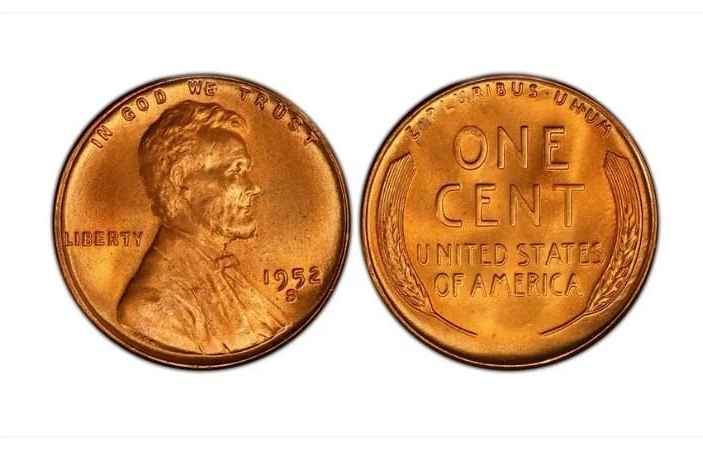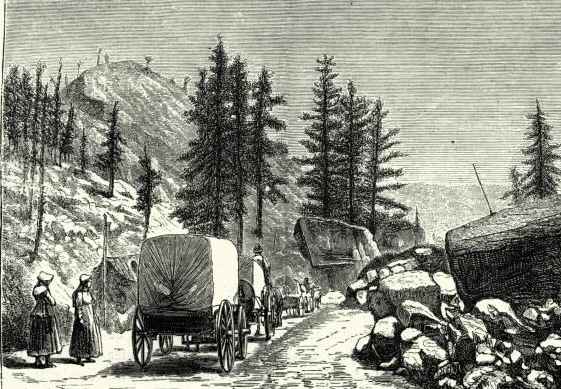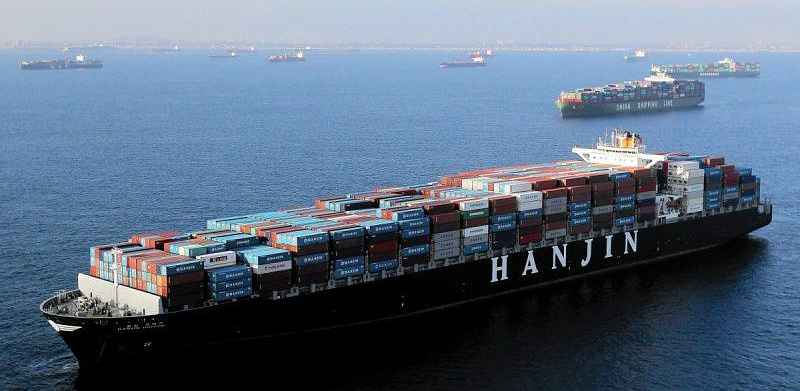






See listing of Recent and Most Popular articles on the Home Page
My World
Category: News & Current Events / Topics: Business • Change • Christmas • COVID-19 • Crisis • Current Events, News • History • Holidays • Holiday Season • News • Trends
Where Are Those Christmas Presents?
Posted: December 18, 2021
The history of the metal box that's wrecking the supply chain…
Behold the simple shipping container. It’s a large, steel box that can carry tens of thousands of pounds of cargo. It’s also stackable and designed to fiton ocean freight ships, trains, and even trucks. These containers have been an unnoticed cog in the world’s highly complex manufacturing network for decades. But not anymore.
Thanks to the pandemic, the shipping container is now at the center of the global supply chain crisis, which has interrupted the delivery of everything from medical supplies to holiday gifts. Because of widespread manufacturing delays and bottlenecks, there aren’t enough of these boxes in the right place and at the right time. There are also too many containers at shipping terminals, which is clogging up ports and blocking more cargo from arriving. Exporters, meanwhile, are struggling to find the empty containers they would normally use to send their products to customers abroad. These shipping container problems are continuing to pile up as the larger manufacturing system they helped enable also struggles to adapt.
The disruption has gotten so bad that some US politicians want the government to take on a bigger role in regulating shipping. Last week, a bipartisan group of House members passed legislation that would allow the Federal Maritime Commission, the US’s international ocean transportation agency, to pressure shipping companies to prioritize empty containers for American manufacturers and farmers.
We weren’t always so dependent on these big metal boxes, though. The first commercial container ship voyage set sail in 1956, and it was only in the 1980s that this form of ocean freight really took off. As global trade proliferated, businesses realized that containers could make shipping cheaper and easier to manage at scale. Because these containers were standardized — they’re typically 20 feet or 40 feet long — thousands could be loaded onto a single cargo ship at once.
“Previously, most of the goods that moved in containers were manufactured goods made in one country and were being exported to another country,” Marc Levinson, an independent historian who studies the global shipping industry, told Recode. “But starting in the late 1980s, businesses figured out how to combine cheaper shipping thanks to containers with cheaper telecommunications and improved computing to create long-distance supply chains.”
These developments created the foundation for today’s “just in time” approach to global manufacturing. This system has made all sorts of products cheaper to make abroad and allowed individual companies to specialize in niche components, like the chemicals used in plastic packaging and specialty computer chips. It’s also been a boon for the container shipping industry, which rakes in billions of dollars every year moving raw materials, parts, and finished goods between factories before they’re finally delivered to consumers. Even Amazon is trying to break into the cargo shipping business now.
But as the pandemic made clear, this system has plenty of downsides. When one product is made across multiple facilities, a single disruption, like a Covid-19 outbreak, can ripple through the supply chain and cause massive problems. And the pressure to meet stringent delivery timelines can be grueling and even dangerous for people with supply chain jobs, like factory workers and truck drivers. Low-cost manufacturing has also fueled overconsumption in wealthy countries, where consumers have come to expect that the exact product they want will be available on demand.
So how did we get here? To learn more about how the shipping container helped standardize today’s global supply chain — and set us up for our current crisis — Recode spoke with Levinson, who is the author of Outside the Box: How Globalization Changed from Moving Stuff to Spreading Ideas and The Box: How the Shipping Container Made the World Smaller and the World Economy Bigger. As Levinson explains, the shipping container is a lot more complicated than it looks, and solving our supply chain challenges will require far more than just producing more boxes.
Editor's Note: To read the interview, go to the full article on Vox. Here's one question by Heilweil and Levison's reponse that helps explan why we're hearing so much about supply chain problems in the United States. Other questions go into more detail on topics suggested in Heilweil;s article above, such as the reasons why the modern "supply chain" became such a big deal, but did not anticpate events like a global pandemic (my own pet peeve about expedient thinking that leads to unintended consequences).
Rebecca Heilweil
The pandemic is impacting the availability of so many different types of products, from phones and laptops to basic medical supplies. Can you explain why all of these problems seem to be coalescing around global logistics?
Marc Levinson
Governments around the world stimulated their economies in order to avoid a recession due to the pandemic. Many governments have provided income support to workers who were losing their jobs because of the pandemic. Many governments have pumped money into different kinds of public works programs to keep people employed. Many central banks have lowered interest rates to stimulate their economies. So all of these actions have really driven economic growth.
But at the same time, because of the pandemic, people have had a hard time spending on services. It’s not easy to take a holiday trip. Many restaurants have been closed or people don’t feel comfortable eating in restaurants. It’s hard to go to an indoor concert or theater performance. So there’s been this enormous growth in spending on goods.
There’s just been much stronger trade in goods than people anticipated. Thosemacroeconomic trends have led to large increases in the volume of containers moving around the world. Because of delays in the process, it’s taking a container longer to go from its origin to its final destination where it’s unloaded, so the container is in use longer for each trip. You’ve just lost a big hunk of the total capacity because the containers can’t be used as intensively.
We’ve had in the United States an additional problem, which is that the ship lines typically charge much higher rates on services from Asia to North America than from North America to Asia. This has resulted in complaints, for example, from farmers and agricultural companies, that it’s hard to get containers in some parts of the country because the ship lines want to ship them empty back to Asia, rather than letting them go to South Dakota and load over the course of several days. So we’ve had exporters in the United States complaining that they have a hard time finding a container that they can use to send their own goods abroad.
Search all articles by Rebecca Heilweil
Posted: December 18, 2021 Accessed 349 times
![]() Go to the list of most recent My World Articles
Go to the list of most recent My World Articles
![]() Search My World (You can expand the search to the entire site)
Search My World (You can expand the search to the entire site)
![]() Go to the list of Most Recent and Most Popular Articles across the site (Home Page)
Go to the list of Most Recent and Most Popular Articles across the site (Home Page)
 Loading requested view...
Loading requested view...
